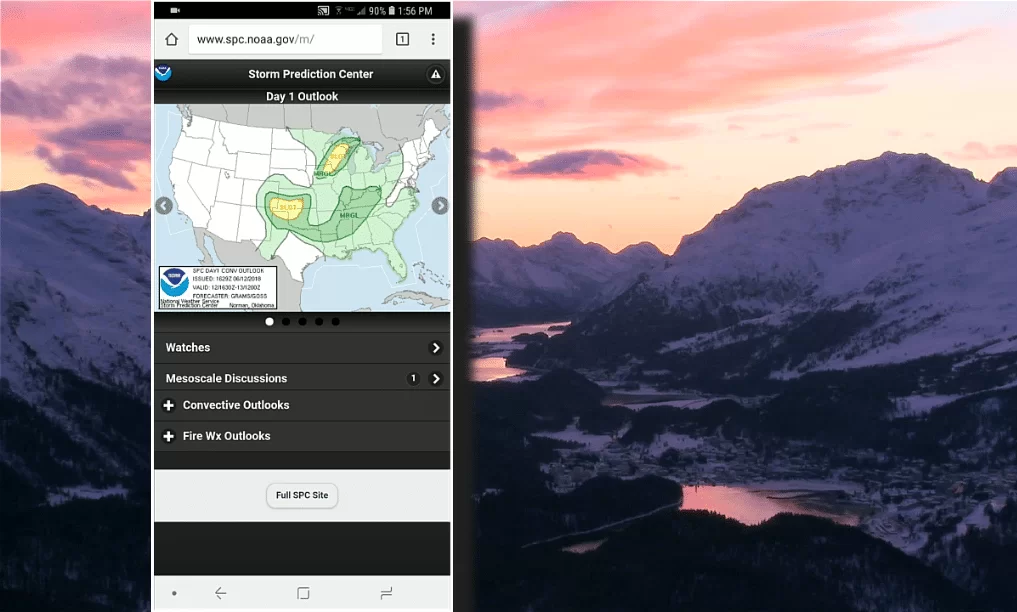Why use ad-layden commercial websites when your tax dollars already paid for weather data?
While commercial sites must make revenue through advertising, user data collection and sharing, that’s not to say commercial weather sites are of no value. If an app or service provides useful features and services for you, I’m not here to tell you to drop it.
In fact, I really love the MyRadar app and the one my favorite hometown meteorologist, @TornadoPayne, provides to viewers via the News 9 Wx app.
Still, if you are looking for ad-free, information-rich services for weather information, your NOAA National Weather Service is there for you as well. Because information on government websites is in the public domain, we all benefit from direct access to this information. In the future we can hope these may be redesigned as responsive sites that work from a single address on any sized screen, but for now when I’m looking for forecasts, particularly in severe storm seasons, I head to two specific places.
| Service | Mobile | Desktop |
|---|---|---|
| Storm Prediction Center issues watches and outlooks | spc.noaa.gov/m | spc.noaa.gov |
| Local Weather Forecast Office specific to your area, issues warnings | mobile.weather.gov | weather.gov/office shortcut |
Storm Prediction Center
💻 Desktop: spc.noaa.gov
📱 Mobile: spc.noaa.gov/m
The NOAA Storm Prediction Center (located in Norman, Oklahoma) provides forecasts and regular convective outlooks for areas of expected thunderstorm occurrence and expected severity. The SPC also issues watches that cover large (typically state-sized) areas when conditions become favorable for severe weather.
Fun tip: if you watch the mesoscale discussions here, you’ll have an inside look at weather preparedness operations and see the rationale ahead of when (or if) watches are issued for an area.

National Weather Service Local Office
💻 Desktop: weather.gov
📱 Mobile: mobile.weather.gov
This is home to NOAA’s National Weather Service, which provides climate, water, and weather services. The NWS has offices all over the country, each responsible for a designated county warning area, and most NWS WFO’s also have a friendly website address, such as weather.gov/norman, which serves Oklahoma City and surrounding areas. During severe weather, the NWS is who will issue a warning when severe weather is imminent (as opposed to a watch issued by the SPC). The Norman Weather Forecast office being responsible for northern, western, central, and southern Oklahoma, and western north Texas.

Typically your local WFO is the only information source you need because they combine local forecasts with information from the Storm Prediction Center to provide hazardous weather outlooks and climatology forecasts, typically in more plain terms for the general public to quickly absorb at a glance.

I’d recommend adding these to mobile sites to your smart phones for easy access. Just remember, these do not replace a weather radio for emergencies, and can only function when you have a working stable data connection. Never rely on mobile push notifications for information during emergencies. Instead, tune to your local radio and television news sources and use a radio with a battery backup.


Leave a Reply